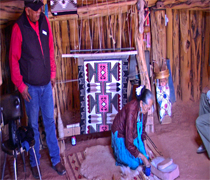
Government/Tribal Council:

Until the discovery of oil in the Navajo lands, a formal government was essentially non-existent. To properly certify release of minerals, the Navajo Nation Tribal Council was formed in 1923 through the United States Secretary of the Interior. The Navajo tribe rejected creation and establishment of a constitution three separate times. On the third attempt in 1968, the draft for a constitution was approved by the tribal council but never brought to the people for ratification. In 1934, the Indian Reorganization Act was brought forth in an attempt to reorganize along constitutional lines. The Navajo people rejected the act believing it would put an end to the Livestock Reduction Program set forth by John Collier, Commissioner of Indian Affairs.
The program led to a dramatic decrease in the amount of sheep allowed on the Navajo lands. In 1933, the sheep population totaled over 1.3 million and there was not enough grass to adequately feed the animals. Erosion was also becoming a sore spot to the government, who felt it would be best to reduce the sheep population by half. Such a move altered the social and economic structures of the tribe. In 1991, a complete reorganization of the Navajo government emerged forming a three branch government: executive, judicial, and legislative. The present day government, which meets a minimum of four to five times a year in the Navajo Nation capital of Window Rock, Arizona, consists of 88 delegates representing 110 chapters.